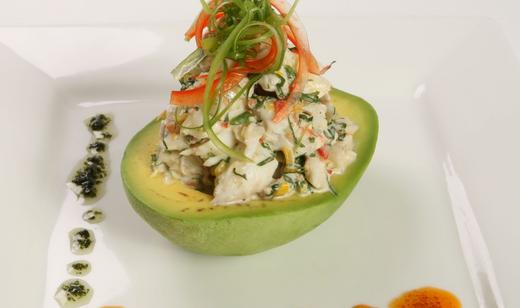We live in a culinary smoothie. Florida food is a bit of this and a bit of that from many countries, all smooshed together as immigrants settled here and they shared the bounty enjoyed by Native Americans.[emember_protected custom_msg=”Click here and register now to read the rest of the article!”]
And as Floridians, we have added our own touches to dishes. The one that comes to mind is Greek Salad with potato salad in the center. The story goes that Pappas restaurant in Tarpon Springs made the hearty addition because sponge divers and dock workers needed more than just vegetables and feta cheese for energy. It’s fun, in season, to listen to tourists when they get it first, trying to figure out 1.) what it is and 2) why it is. Spread some Florida hospitality and tell them what and why.
Things we take for granted were not always here. Pigs were brought by Spanish explorers and proliferated in our climate . . . the pigs, not the explorers. How could we have cook-outs without ribs and pork shoulders?
Africans added their touches— spices and ingredients— from home. Cubans kicked in their share, too. Lunch in Central Florida is often Cuban sandwiches, thick with marinated meats and pickles, mustard and mayo squeezing out the sides of the crispy bread. Minorcans and Jews added a pinch of this and dash of that to their own dishes, adapted to use what they found.
Caribbean cuisine is a mixture of many origins and it got Florida’s food even more mixed up when it came north with tropical ingredients and spices.
Look at Florida cookbooks and you see what we had to start with and how much has been imported into the mix. The natives gave us corn and we have made great use of it— fresh, dried, ground, breads, soups, and desserts. A Florida fish fry wouldn’t be the same without Hush Puppies.
Spanish bean soup, Conch chowder, Hoppin’ John, Greek salad, sweet potato biscuits, Key Lime pie, kumquat marmalade, guava turnovers, Boliche, all started somewhere else.
And simple dishes that we think of as American, get a new outlook on life with foreign flavors. Take good ol’ Sloppy Joes, for example. The sauce even comes in a can. Make it like you always do but add a few sliced stuffed green olives, a few raisins, some chopped tomato, a pinch of allspice or nutmeg, and a splash of hot sauce. You have Picadillo. Sort of a Sloppy Jose. Instead of burger buns you can serve it on Cuban bread.
Florida has its own avocados, but we didn’t always have them. They came north from Mexico and South America. They have less fat and fewer calories than the California varieties. They are even smooth and pretty. But they are bigger, so if you eat a whole one you probably get more calories. Share. Try cutting one in half, whack the seed with a big knife and twist it out, sprinkle with lemon or lime juice, and fill the cavity with crab, tuna or chicken salad.
The big star of the Florida food show is citrus. Our state would not be a shadow of what it is without citrus from somewhere else— and air conditioning. Now is the time to try some new dishes with citrus. Make a salad of bright grapefruit sections cut in half, diced cucumber and celery for crunch, mayo for smoothness, boiled Florida shrimp (cut in pieces if large), for taste. Garnish with herbs from your garden. Thank goodness people shared their culinary wealth.
CREDITS
column by TRENT ROWE, Food Editor
[/emember_protected]


